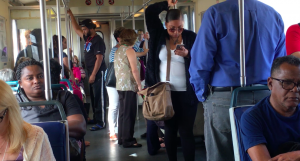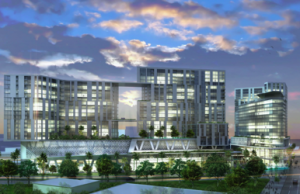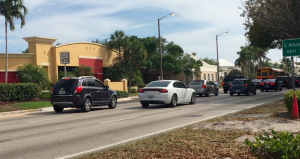Posted May 7, 2017
By JIHAD SHATARA
Traffic in Miami is a nightmare, but Miami-Dade county is putting in some great efforts to fix the multitude of problems.
South Florida has a reputation for having horrible traffic and congested roads.
Miami’s roads are flooded with reckless drivers and often-unnecessary traffic. Interstate 95, better known as I-95, has become one of the most dangerous highways in America.
According to Everquote, one of the leaders in car insurance, using data from 2010-15, I-95 was rated the fifth-most dangerous highway in America. Those numbers are alarming for an already-overcrowded city.
Miami-Dade County is putting in its best effort to change the wave of how people move around in South Florida. Right now, you can say the system is a little flawed. With more and more people wanting a New York-style system, it just is not feasible in a state where there is water beneath the ground.

Citizens on the Metrorail during rush hour traffic as they get ready to leave at University Station (Photo by Jihad Shatara).
The Metrorail only covers Miami-Dade County, with a connector to the Tri Rail.
Everyday train riders even weighed in on the problems mentioning how annoying it is that there is only two directions, either north or south. Interviewing five different passengers coming off of the train, they all stated one common theme: they wish that the train went more east and west along with the north and south.
According to Irene Hegedus, chief of Transportation Enhancement for Miami-Dade County, it is no easy problem to fix.
“There is no one solution and we need to understand how Miamians have a love affair with their vehicles,” Hegedus stated.
“If citizens were born with the mindset that they have to walk like in New York City, then the Metrorail would be way more popular.”
Hegedus points to the lack of use of public transit in Miami as the problem. She currently is involved in the $14.6 million project of redeveloping Douglas Road Station. The renovations are expected to create a mixture of temporary and permanent 1,400 jobs and bring in more than $400 million over 30 years.

Rendering of the upcoming Douglas Road Station renovations (Photo courtesy of Miami-Dade Public County Transportation Department).
Beyond the expansion of Douglas Road, the county is expected to debut about 130 new rail cars.
These new rail cars feature a new Wi-Fi system, are far more spacious and even feature newer racks for those who have bicycles.
The new cars will feature automated diagnostics, according to Karla Damian, public information officer for Miami Dade Transportation.
“They are like their own little smart cars and are very comfortable,” she stated.
These new cars, estimated to cost approximately $300 million, are currently being tested while a majority of them will be on the tracks as soon as fall 2017.
Maikel Leon, a business technology professor at the University of Miami, believes that this is a step toward the future.
“This will be big with millennials and younger generation. Hopefully a reliable system can be built,” he stated.
The current disaster that is the roads in Miami-Dade County is a problem not easily fixed. Miami-Dade Public Transit has a big task at hand. Getting citizens off the road is a challenge, but all they have to do is buy in to the new projects at hand.

